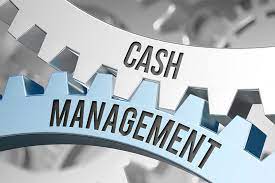
In today’s dynamic business environment, effective cash management is crucial for sustaining operations, managing growth, and ensuring financial stability. Whether you’re a startup or a well-established enterprise, implementing a robust cash management strategy can significantly impact your financial health and decision-making process. This blog outlines a practical approach to developing and implementing such a strategy, emphasizing clarity, precision, and actionable steps.
Step 1: Assess Current Financial Position
- Review cash flow statements, balance sheets, and income statements.
- Understand liquidity, cash reserves, and financial obligations.
- Identify areas of improvement and set realistic goals.
Step 2: Set Clear Objectives
- Define objectives that align with business goals.
- Consider goals like optimizing cash flow, reducing borrowing costs, or building a cash reserve.
- Use SMART (Specific, Measurable, Achievable, Relevant, Time-bound) criteria for clarity and accountability.
Step 3: Establish Cash Flow Forecasting
- Develop mechanisms to predict inflows and outflows accurately.
- Use historical data, sales projections, and expense forecasts.
- Create forecasts for daily, weekly, and monthly periods.
Example Table: Cash Flow Forecast
| Month | Projected Inflows ($) | Projected Outflows ($) | Net Cash Flow ($) |
|---|---|---|---|
| January | 100,000 | 80,000 | 20,000 |
| February | 120,000 | 90,000 | 30,000 |
| March | 110,000 | 95,000 | 15,000 |
Step 4: Optimize Receivables and Payables
- Manage receivables and payables efficiently.
- Offer discounts for early payments and negotiate favorable terms with suppliers.
- Monitor aging receivables closely.
Step 5: Implement Cost Control Measures
- Identify and reduce unnecessary expenses.
- Negotiate better vendor contracts and explore alternative sourcing.
- Conduct regular expense reviews.
Example Table: Cost Reduction Initiatives
| Initiative | Implementation Cost ($) | Cost Savings ($) | Implementation Timeline |
|---|---|---|---|
| Vendor Contract Negotiation | 10,000 | 10,000 | 3 months |
| Process Automation | 15,000 | 15,000 | 6 months |
Step 6: Establish a Cash Reserve Policy
- Develop a policy outlining target cash levels based on needs and risk tolerance.
- Allocate funds for emergencies, capital expenditures, and strategic opportunities.
Step 7: Monitor and Review Regularly
- Track cash management metrics against benchmarks and objectives.
- Conduct periodic reviews to assess strategy effectiveness and make adjustments.
Step 8: Leverage Technology and Automation
- Invest in cash management software for real-time visibility, task automation, and actionable insights.
- Utilize dashboards and financial reporting tools for data visualization and decision-making.
Step 9: Ensure Stakeholder Alignment
- Align finance teams, executives, and department heads with cash management objectives.
- Foster communication and collaboration for effective strategy implementation.
Example Table: Organizational Alignment
| Stakeholder | Role | Responsibilities |
|---|---|---|
| CFO | Strategic Oversight | Financial Planning, Risk Management |
| Finance Managers | Implementation | Cash Flow Forecasting, Cost Control |
| Department Heads | Execution | Budget Adherence, Expense Management |
Step 10: Continuously Improve and Adapt
- Focus on continuous improvement amid evolving market conditions.
- Solicit feedback, benchmark against industry practices, and refine your approach




